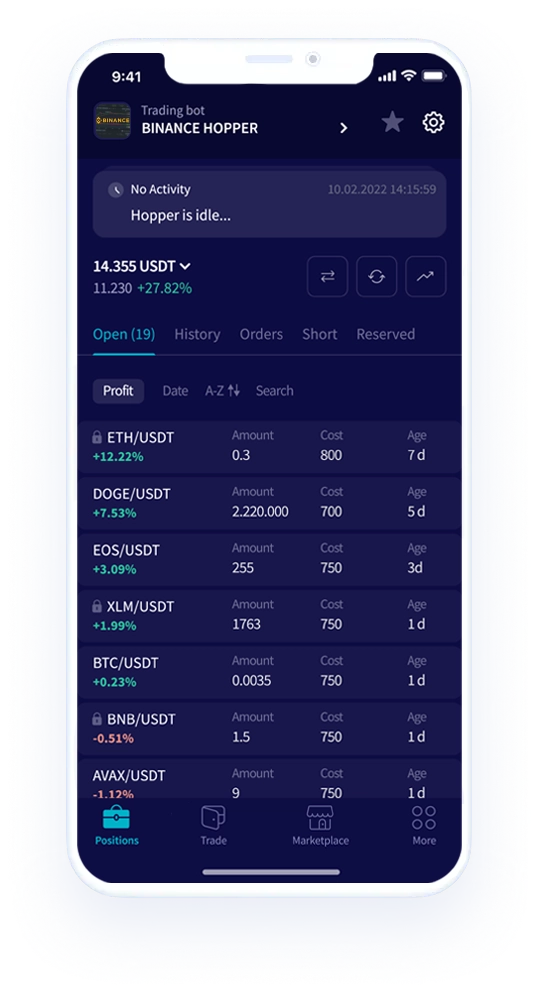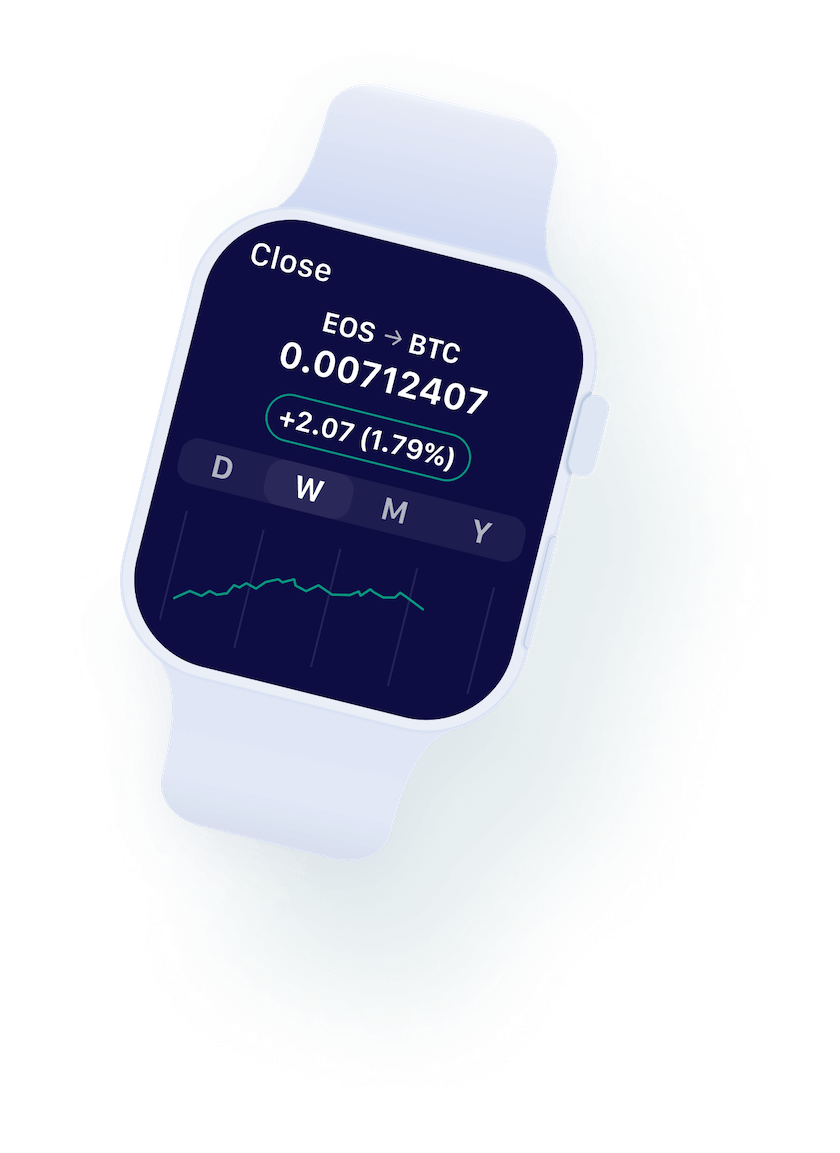The purpose of a portfolio is to provide exposure to different higher-risk growth assets — or tokens, in this case — but at the same time, retain some safe assets that will tide you through the bear market.
Still, having these assets in your portfolio is not enough; you can leverage high-yield accounts for higher returns on investment (ROI) and ideally, ensure some wealth preservation.
As each investor has different preferences and priorities, here are some ways in which you can gauge which portfolio would suit you best, based on your habits, finances, needs and wants. To make this as simple as possible, we are using 3 different investor personas, allowing you to see which resonates most with you:
The Hodler
The Hodler is someone who uses the ‘buy and hold’ strategy, and may use 1 or 2 exchanges just to purchase and hold their cryptocurrencies. As the name suggests, The Hodler is typically not too concerned about short-term price movements in the market because their investment timeline is 5 to 10 years. They likely learnt about cryptocurrency through their circle of friends and joined a few social media groups or chat rooms to receive relevant crypto updates.
The Investor
The Investor probably has investments in traditional assets that are bringing them 5% to 7% yields in coupons, dividends or interest. However, what The Investor needs is to leverage new technologies or investment assets to increase their current yield. Chances are, The Investor is likely to have 5% to 10% of their net worth in cryptocurrencies because they are still learning about technologies and investment strategies in the cryptocurrency space.
The Explorer / Trader
The Explorer or Trader is someone who is willing to take greater risk and to experiment with DeFi protocols outside of centralized exchanges (CEX). The Explorer sees cryptocurrencies and associated technologies as a doorway to the future of money. They also engage in discussions within various communities and are not afraid to try new strategies to reach their financial goals.
Now let’s take a look at the different portfolio strategies and how they may suit the three types of investors we have described:
Balanced portfolio
A balanced portfolio is similar to the portfolio we covered in a previous article, where we purchased equal amounts of different cryptocurrencies on a monthly basis.
In the article, we built a portfolio to track the top 10 cryptocurrencies and repurchase these cryptocurrencies on a monthly basis. By doing so, we created a Dollar Cost Averaging effect, where we accumulated tokens that were down in value but at the same time, bought fewer of the tokens that were up in value. This might not work in our favor immediately but over time, the cost of our tokens will adjust in tandem with the market.
Building a balanced portfolio is as simple as purchasing the same value of tokens on a regular basis, whether it’s weekly, fortnightly or monthly — depending on how you want to average into the market.
Based on the portfolio we built, we purchased $100 worth of the top 10 cryptocurrencies. Over time, this should give us consistent growth. If you were to break the portfolio down into a pie chart, it would look something like this:

You may be wondering why the percentages seem off, but that is because these percentages are weighted in USD and therefore, tokens that have increased in value account for higher percentages over tokens that decreased in value.
You may also have noticed that Dogecoin (DOGE) and Avalanche (AVAX) make up only ~5% of the portfolio. This is because DOGE was replaced by AVAX based on market capitalization.
This type of portfolio is suitable for The Hodler as it alleviates any worry about short-term price changes and allows The Hodler to accumulate tokens on a regular basis, growing their portfolio over time.
A balanced portfolio tracking the top tokens in the market reduces the risk of exposure to much more volatile low-cap tokens that could wipe out gains and cause losses overnight.
Market-weighted portfolio
A portfolio that gives stable returns is bound to put a smile on investors’ faces. But how can you maximize gains while maintaining minimal risk?
In this case, you should consider a market-weighted portfolio. Such a portfolio is calculated based on the market capitalization of a token versus the total capitalization of the crypto market.
Similar to how an exchange-traded fund (ETF) is built, different stocks will have different weightage in an ETF, based on the goals of the fund.
For example, if you are looking to invest in the top 5 tokens (BTC, ETH, BNB, SOL and ADA), instead of allocating 20% of your funds into each of these tokens, you should follow this formula — (token market cap / token market cap) x 100%:
| Token | Market Capitalization | Holdings (%) |
| BTC | 894,434,710,737 | 58.86% |
| ETH | 443,075,272,964 | 29.16% |
| BNB | 86,113,402,279 | 5.67% |
| SOL | 53,057,029,908 | 3.49% |
| ADA | 42,997,871,378 | 2.83% |
| Total Token Market Cap | 1,519,678,287,266 |

This type of portfolio will give The Investor exposure to the different tokens they are looking to invest in. And since it is based on market capitalization, upon which most ETFs are built, The Investor would already be fairly familiar with it.
Fast-growth portfolio
The Explorer is a unique person willing to take higher risks for higher returns. Essentially, they usually look out for low-cap tokens with the objective of flipping them for a fast profit.
However, with different industries within the crypto space gaining traction, picking winners might prove a challenge.
For example, in 2021, protocol tokens like LUNA and SOL saw exponential growth of 12,866% and 10,289% respectively. If The Explorer had purchased them early on, they would have made astronomical profits.
Investors holding fast-growth portfolios must constantly do their research, keep up with the latest news, and scour white papers of new projects. The breakdown of such a portfolio looks something like this:

Parting words
Consider your own circumstances and desired outcomes and use this to hatch a plan to work towards a portfolio that is most likely to help you accumulate some wealth for your crypto investment journey.
New to Huobi? Register for a Huobi account and receive a ‘Welcome Bonus’ to help you start your investment journey! If you’re an existing user, check out Huobi Earn, where you can start earning interest from your idle cryptocurrencies!
The post appeared first on Huobi Blog.

